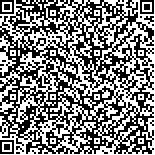Automatic Identification Technology of Melting Layer in Millimeter Wave Cloud Radar Data
- Article
- Figures
- Metrics
- Preview PDF
- Reference
- Related
- Cited by
- Materials
Abstract:
In order to take advantage of the melting layer information in radar data, an automated identification technology has been developed by analyzing the signatures of melting layer in the reflectivity and linear depolarization ratio (LDR) parameters of millimeter wave cloud radar. Radar and radiosonde data during May to October 2010 in Hangzhou are used to compare and analyze the identification results and sensitivity of the parameters in the algorithm. Results show that this technology can identify the existence of melting layer. The difference between the top boundary average heights of melting layer obtained by this technology and the measured zero level height by radiosonde is less than 100 m. Parameter sensitivity analysis shows that melting layer signatures in reflectivity and LDR are different, and the thickness of melting layer is between 600 m and 1500 m. The causes of the little difference in this identification technology are the high range resolution of millimeter wave cloud radar, LDR sensitive to melting layer and the use of reflectivity and LDR dual constraints.
Keywords:
Project Supported:
Clc Number:


Mobile website









